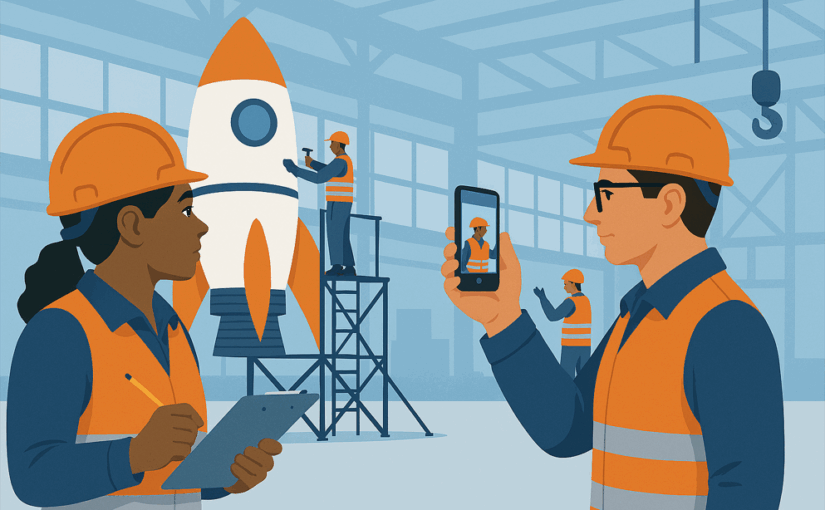
In an age when AI-driven ergonomics apps flood the market, many organizations believe they’ve found a quick fix for musculoskeletal risk. These turnkey tools boast real-time posture scoring, automated dashboards, and alarming simplicity. Without deeper, business-critical analysis, companies risk mistaking a camera and an algorithm for a comprehensive risk-management strategy. As organizations strive for truly transformative ergonomics programs, one truth remains clear: Certified Professional Ergonomists (CPEs) offer irreplaceable value that no algorithm can replicate.
These capabilities promise to democratize ergonomics, placing data-driven insights directly into the hands of managers. In theory, this speeds up interventions and slashes injuries; in practice, however, it often ends up as a veneer of proactive risk management that fails to produce meaningful reductions in workplace harm.
Even the most sophisticated AI needs human calibration. A Certified Professional Ergonomist (CPE) reads the tacit signals that elude algorithms, validates AI outputs against on-site realities, and refines risk thresholds so interventions hit the right balance—neither excessive nor insufficient.
When organizations roll out AI-driven ergonomics apps as a one-size-fits-all, site-wide risk assessment, they trade strategic insight for superficial metrics—focusing on threshold breaches instead of root-cause analysis, misallocating capital to cameras and dashboards while overlooking subtle workflow nuances, and lulling leadership into a false sense of safety. Without contextual observations, business-impact modeling, or worker collaboration, these platforms generate sterile reports that rarely drive lasting change or demonstrable ROI. That said, their basic algorithmic posture-scoring and generic risk thresholds do have a role: frontline operators and supervisors can use them as lightweight surveillance tools to quickly flag obvious hazards, monitor compliance, and prioritize areas for deeper ergonomic evaluation—but they should never be mistaken for a comprehensive, expert-led ergonomics strategy.
Algorithms quantify observable motions, but a CPE discerns those imperceptible compensations—micro-breaks, tool tilts, workplace shortcuts—that separate benign deviations from chronic hazards. By embedding AI outputs into the authentic tempo of work, the CPE ensures interventions are precisely calibrated.
A CPE goes beyond prescribing supportive devices. They orchestrate engineering controls, administrative adjustments, and behavioral nudges so that every intervention synchronizes with operational constraints and throughput goals, transforming ergonomics from an isolated fix into an enduring workflow enhancement.
Navigating OSHA mandates, ISO ergonomics standards, and industry-specific guidelines demand more than AI dashboards. A CPE crafts defensible audit trails, risk matrices, and decision logs that satisfy auditors, insurers, and legal counsel—safeguarding the organization against compliance gaps and liability exposure.
Ergonomics isn’t a technical checklist; it’s a cultural evolution. A CPE designs participatory workshops, coaches supervisors in inclusive leadership, and builds psychological safety so workers feel empowered to flag early discomfort. This social architecture embeds ergonomic thinking into everyday practice.
As production lines, equipment, and workforce demographics shift, AI models require retraining. A CPE institutionalizes system-based cadences and periodic audits, recalibrating risk thresholds and training content so the program remains agile, anticipatory, and perpetually aligned with emerging challenges.
A CPE frames ergonomics as a strategic investment, translating injury-reduction gains, uptime improvements, and retention metrics into multi-year financial forecasts. By securing dedicated funding, championing pilot initiatives, and delivering post-implementation ROI reviews, they cement ergonomics as a core business driver.
Today’s AI-based ergonomics apps dazzle with real‐time posture scoring, automated dashboards, and low per‐assessment costs, yet too often organizations mistake this flash for a full‐blown program—deploying cameras and algorithms as turnkey solutions without ever implementing tailored fixes or applying human reasoning to complex, real‐world situations. While these platforms excel at surface‐level screening, they fall short of prescribing and executing site‐specific interventions, and their algorithmic alerts lack the contextual nuance needed to distinguish benign deviations from chronic hazards. Used in isolation, they generate glossy reports rather than driving precise, sustainable change. True ergonomic transformation demands pairing rapid‐screening tools with Certified Professional Ergonomists who can translate every metric into reasoned, adaptive solutions.
AI and Ergonomics: Merging Technology with Human Expertise for Optimal Workplace Solution
Exploring the Intersection of Ergonomics, Design Thinking, and AI/ML in Design Innovation

Ergo-ology partnered with Glazer’s Beer & Beverage to address the leading operational risk in beverage distribution: Manual Material Read more

Yamaha leaned into Ergo-ology’s ELP® (ergonomics leadership program) at the start of 2022 with hopes of engaging employees, developing a Read more

We are pleased to announce the United States of America has granted Ergo-ology permissions to certify in #ergonomics with the Read more